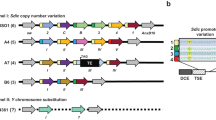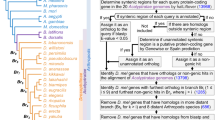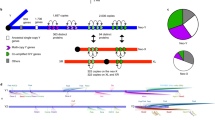Abstract
Ageing is a complex biological process that is accompanied by changes in gene expression and mutational load. In many species, including humans, older fathers pass on more paternally derived de novo mutations; however, the cellular basis and cell types driving this pattern are still unclear. To explore the root causes of this phenomenon, we performed single-cell RNA sequencing on testes from young and old male Drosophila and genomic sequencing (DNA sequencing) on somatic tissues from the same flies. We found that early germ cells from old and young flies enter spermatogenesis with similar mutational loads but older flies are less able to remove mutations during spermatogenesis. Mutations in old cells may also increase during spermatogenesis. Our data reveal that old and young flies have distinct mutational biases. Many classes of genes show increased postmeiotic expression in the germlines of older flies. Late spermatogenesis-biased genes have higher dN/dS (ratio of non-synonymous to synonymous substitutions) than early spermatogenesis-biased genes, supporting the hypothesis that late spermatogenesis is a source of evolutionary innovation. Surprisingly, genes biased in young germ cells show higher dN/dS than genes biased in old germ cells. Our results provide new insights into the role of the germline in de novo mutation.
This is a preview of subscription content, access via your institution
Access options
Access Nature and 54 other Nature Portfolio journals
Get Nature+, our best-value online-access subscription
$29.99 / 30 days
cancel any time
Subscribe to this journal
Receive 12 digital issues and online access to articles
$119.00 per year
only $9.92 per issue
Buy this article
- Purchase on Springer Link
- Instant access to full article PDF
Prices may be subject to local taxes which are calculated during checkout





Similar content being viewed by others
Data availability
Raw sequence data have been deposited to NCBI BioProject no. PRJNA777411.
Code availability
The code used for processing the data has been deposited at https://github.com/LiZhaoLab/Mutation_project. This repository also includes permanent links to large data files including a Seurat RDS and mutation database.
References
Gao, Z. et al. Overlooked roles of DNA damage and maternal age in generating human germline mutations. Proc. Natl Acad. Sci. USA 116, 9491–9500 (2019).
Crow, J. F. The origins, patterns and implications of human spontaneous mutation. Nat. Rev. Genet. 1, 40–47 (2000).
Gao, Z., Wyman, M. J., Sella, G. & Przeworski, M. Interpreting the dependence of mutation rates on age and time. PLoS Biol. 14, e1002355 (2016).
Drost, J. B. & Lee, W. R. Biological basis of germline mutation: comparisons of spontaneous germline mutation rates among Drosophila, mouse, and human. Environ. Mol. Mutagen. 25, 48–64 (1995).
Gao, J.-J. et al. Highly variable recessive lethal or nearly lethal mutation rates during germ-line development of male Drosophila melanogaster. Proc. Natl Acad. Sci. USA 108, 15914–15919 (2011).
Li, W. H., Ellsworth, D. L., Krushkal, J., Chang, B. H. & Hewett-Emmett, D. Rates of nucleotide substitution in primates and rodents and the generation-time effect hypothesis. Mol. Phylogenet. Evol. 5, 182–187 (1996).
Huttley, G. A., Jakobsen, I. B., Wilson, S. R. & Easteal, S. How important is DNA replication for mutagenesis? Mol. Biol. Evol. 17, 929–937 (2000).
Irigaray, P. et al. Lifestyle-related factors and environmental agents causing cancer: an overview. Biomed. Pharmacother. 61, 640–658 (2007).
Parkin, D. M., Boyd, L. & Walker, L. C. 16. The fraction of cancer attributable to lifestyle and environmental factors in the UK in 2010. Br. J. Cancer 105, S77–S81 (2011).
Moore, L. et al. The mutational landscape of human somatic and germline cells. Nature 597, 381–386 (2021).
Witt, E., Benjamin, S., Svetec, N. & Zhao, L. Testis single-cell RNA-seq reveals the dynamics of de novo gene transcription and germline mutational bias in Drosophila. eLife 8, e47138 (2019).
Lee, M.-H., Luo, H.-R., Bae, S. H. & San-Miguel, A. Genetic and chemical effects on somatic and germline aging. Oxid. Med. Cell. Longev. 2020, 4684890 (2020).
Jones, D. L. Aging and the germ line: where mortality and immortality meet. Stem Cell Rev. 3, 192–200 (2007).
Cawthon, R. M. et al. Germline mutation rates in young adults predict longevity and reproductive lifespan. Sci. Rep. 10, 10001 (2020).
Xia, B. et al. Widespread transcriptional scanning in testes modulates gene evolution rates. Cell 180, 248–262 (2020).
Zheng, G. X. Y. et al. Massively parallel digital transcriptional profiling of single cells. Nat. Commun. 8, 14049 (2017).
Thurmond, J. et al. FlyBase 2.0: the next generation. Nucleic Acids Res. 47, D759–D765 (2019).
Witt, E., Shao, Z., Hu, C., Krause, H. M. & Zhao, L. Single-cell RNA-sequencing reveals pre-meiotic X-chromosome dosage compensation in Drosophila testis. PLoS Genet. 17, e1009728 (2021).
Satija, R., Farrell, J. A., Gennert, D., Schier, A. F. & Regev, A. Spatial reconstruction of single-cell gene expression data. Nat. Biotechnol. 33, 495–502 (2015).
Svetec, N., Cridland, J. M., Zhao, L. & Begun, D. J. The adaptive significance of natural genetic variation in the DNA damage response of Drosophila melanogaster. PLoS Genet. 12, e1005869 (2016).
Singh, N. D., Bauer DuMont, V. L., Hubisz, M. J., Nielsen, R. & Aquadro, C. F. Patterns of mutation and selection at synonymous sites in Drosophila. Mol. Biol. Evol. 24, 2687–2697 (2007).
Juge, F., Fernando, C., Fic, W. & Tazi, J. The SR protein B52/SRp55 is required for DNA topoisomerase I recruitment to chromatin, mRNA release and transcription shutdown. PLoS Genet. 6, e1001124 (2010).
Ishikawa, T. et al. Mutagenic and nonmutagenic bypass of DNA lesions by Drosophila DNA polymerases dpolη and dpolι. J. Biol. Chem. 276, 15155–15163 (2001).
Su, T. T. et al. Cell cycle roles for two 14-3-3 proteins during Drosophila development. J. Cell Sci. 114, 3445–3454 (2001).
Good, J. M. & Nachman, M. W. Rates of protein evolution are positively correlated with developmental timing of expression during mouse spermatogenesis. Mol. Biol. Evol. 22, 1044–1052 (2005).
Drummond, D. A., Bloom, J. D., Adami, C., Wilke, C. O. & Arnold, F. H. Why highly expressed proteins evolve slowly. Proc. Natl Acad. Sci. USA 102, 14338–14343 (2005).
Lawlor, M. A., Cao, W. & Ellison, C. E. A transposon expression burst accompanies the activation of Y-chromosome fertility genes during Drosophila spermatogenesis. Nat. Commun. 12, 6854 (2021).
Lee, Y. C. G. & Langley, C. H. Transposable elements in natural populations of Drosophila melanogaster. Philos. Trans. R. Soc. Lond. B Biol. Sci. 365, 1219–1228 (2010).
Li, W. et al. Activation of transposable elements during aging and neuronal decline in Drosophila. Nat. Neurosci. 16, 529–531 (2013).
Stanley, C. E. J.Jr & Kulathinal, R. J. flyDIVaS: a comparative genomics resource for Drosophila divergence and selection. G3 (Bethesda) 6, 2355–2363 (2016).
Schumacher, J. & Herlyn, H. Correlates of evolutionary rates in the murine sperm proteome. BMC Evol. Biol. 18, 35 (2018).
Austad, S. N. & Hoffman, J. M. Is antagonistic pleiotropy ubiquitous in aging biology? Evol. Med. Public Health 2018, 287–294 (2018).
Williams, G. C. Pleiotropy, natural selection, and the evolution of senescence. Evolution 11, 398–411 (1957).
Loewe, L. & Hill, W. G. The population genetics of mutations: good, bad and indifferent. Philos. Trans. R. Soc. Lond. B Biol. Sci. 365, 1153–1167 (2010).
Barreau, C., Benson, E., Gudmannsdottir, E., Newton, F. & White-Cooper, H. Post-meiotic transcription in Drosophila testes. Development 135, 1897–1902 (2008).
Harris, I. D., Fronczak, C., Roth, L. & Meacham, R. B. Fertility and the aging male. Rev. Urol. 13, e184–e190 (2011).
Xia, B. & Yanai, I. Gene expression levels modulate germline mutation rates through the compound effects of transcription-coupled repair and damage. Hum. Genet. 141, 1211–1222 (2022).
Deger, N., Yang, Y., Lindsey-Boltz, L. A., Sancar, A. & Selby, C. P. Drosophila, which lacks canonical transcription-coupled repair proteins, performs transcription-coupled repair. J. Biol. Chem. 294, 18092–18098 (2019).
Lanciano, S. & Cristofari, G. Measuring and interpreting transposable element expression. Nat. Rev. Genet. 21, 721–736 (2020).
Chuong, E. B., Elde, N. C. & Feschotte, C. Regulatory activities of transposable elements: from conflicts to benefits. Nat. Rev. Genet. 18, 71–86 (2017).
Cheng, C. & Kirkpatrick, M. Molecular evolution and the decline of purifying selection with age. Nat. Commun. 12, 2657 (2021).
Witt, E., Svetec, N., Benjamin, S. & Zhao, L. Transcription factors drive opposite relationships between gene age and tissue specificity in male and female Drosophila gonads. Mol. Biol. Evol. 38, 2104–2115 (2021).
Sharp, N. P. & Agrawal, A. F. Low genetic quality alters key dimensions of the mutational spectrum. PLoS Biol. 14, e1002419 (2016).
Verheijen, B. M. & van Leeuwen, F. W. Commentary: the landscape of transcription errors in eukaryotic cells. Front. Genet. 8, 219 (2017).
Kawase, E., Wong, M. D., Ding, B. C. & Xie, T. Gbb/Bmp signaling is essential for maintaining germline stem cells and for repressing bam transcription in the Drosophila testis. Development 131, 1365–1375 (2004).
Hwa, J. J., Hiller, M. A., Fuller, M. T. & Santel, A. Differential expression of the Drosophila mitofusin genes fuzzy onions (fzo) and dmfn. Mech. Dev. 116, 213–216 (2002).
Courtot, C., Fankhauser, C., Simanis, V. & Lehner, C. F. The Drosophila cdc25 homolog twine is required for meiosis. Development 116, 405–416 (1992).
Papagiannouli, F. & Mechler, B. M. discs large regulates somatic cyst cell survival and expansion in Drosophila testis. Cell Res. 19, 1139–1149 (2009).
Narasimhan, V. et al. BCFtools/RoH: a hidden Markov model approach for detecting autozygosity from next-generation sequencing data. Bioinformatics 32, 1749–1751 (2016).
Li, H. et al. The Sequence Alignment/Map format and SAMtools. Bioinformatics 25, 2078–2079 (2009).
Acknowledgements
We thank H. Duan and C. Zhao at the Genomics Resource Center of Rockefeller University for their help with the scRNA-seq libraries and members of the Zhao lab for their helpful comments and suggestions. We thank Z. Gao from UPenn for the suggestions on interpreting mutational signatures. The work was supported by National Institutes of Health MIRA no. R35GM133780, the Robertson Foundation, a Monique Weill-Caulier Career Scientist Award, a Rita Allen Foundation Scholar Program, a Vallee Scholar Program (no. VS-2020-35) and an Alfred P. Sloan Research Fellowship (no. FG-2018-10627) to L.Z.
Author information
Authors and Affiliations
Contributions
E.W. and L.Z. conceived the study and designed the experiments and analysis. C.B.L., E.W. and N.S. performed the experiments and generated the data. E.W. performed all the analysis with input from L.Z. E.W. and L.Z. wrote the manuscript with the input from all authors.
Corresponding author
Ethics declarations
Competing interests
The authors declare no competing interests.
Peer review
Peer review information
Nature Ecology & Evolution thanks Shixiang Sun and the other, anonymous, reviewer(s) for their contribution to the peer review of this work. Peer reviewer reports are available.
Additional information
Publisher’s note Springer Nature remains neutral with regard to jurisdictional claims in published maps and institutional affiliations.
Extended data
Extended Data Fig. 1 Dot plots of key marker genes in old and young fly testes.
Split by cell type, these are the average expression values of the ‘SCT’ slot in the old (a) and young (b) Seurat objects. Color corresponds to the level of expression, and the size of the dot represents the percent of cells of a class where a gene is detected.
Extended Data Fig. 2 Correlograms of germ cells between scRNA-seq replicates.
Correlations have been split between cell types. For each cell type, replicates from each age group all correlate with Pearson’s R>0.91. Correlations were drawn from gene expression values from the ‘RNA’ slot of the Seurat object using the corrplot R package.
Extended Data Fig. 3 Age-related differential expression of genes, including genome maintenance genes.
Shown are the results of differential expression tests between old and young flies, calculated separately for each cell type. Log2 fold changes refer to the ratio between expression in young compared to old flies. P values are from a 2-sided Wilcoxon test and corrected with Bonferroni’s correction. Enrichment statistics for genome maintenance genes are in Supplementary Table 2.
Extended Data Fig. 4 Expression vs. number of SNPs detected.
We averaged the expression of every gene across every replicate and then compared the number of SNPs detected within genes with lower than mean expression (‘Low expression’, n = 310) with genes with expression greater than the mean expression of all genes (‘High expression’, n = 1488). For each group we compared genes with a two-sided Wilcoxon test, then adjusted p values with Bonferroni’s correction. There are significantly more mutations in lowly expressed genes in every replicate. Boxes represent the 75th to 25th percentiles, the top whisker represents the largest value within 1.5 times the interquartile range, and the bottom whisker represents the smallest value within 1.5 times the interquartile range of the 25th percentile.
Supplementary information
Rights and permissions
Springer Nature or its licensor (e.g. a society or other partner) holds exclusive rights to this article under a publishing agreement with the author(s) or other rightsholder(s); author self-archiving of the accepted manuscript version of this article is solely governed by the terms of such publishing agreement and applicable law.
About this article
Cite this article
Witt, E., Langer, C.B., Svetec, N. et al. Transcriptional and mutational signatures of the Drosophila ageing germline. Nat Ecol Evol 7, 440–449 (2023). https://doi.org/10.1038/s41559-022-01958-x
Received:
Accepted:
Published:
Issue Date:
DOI: https://doi.org/10.1038/s41559-022-01958-x
This article is cited by
-
Paternal age, risk of congenital anomalies, and birth outcomes: a population-based cohort study
European Journal of Pediatrics (2023)



